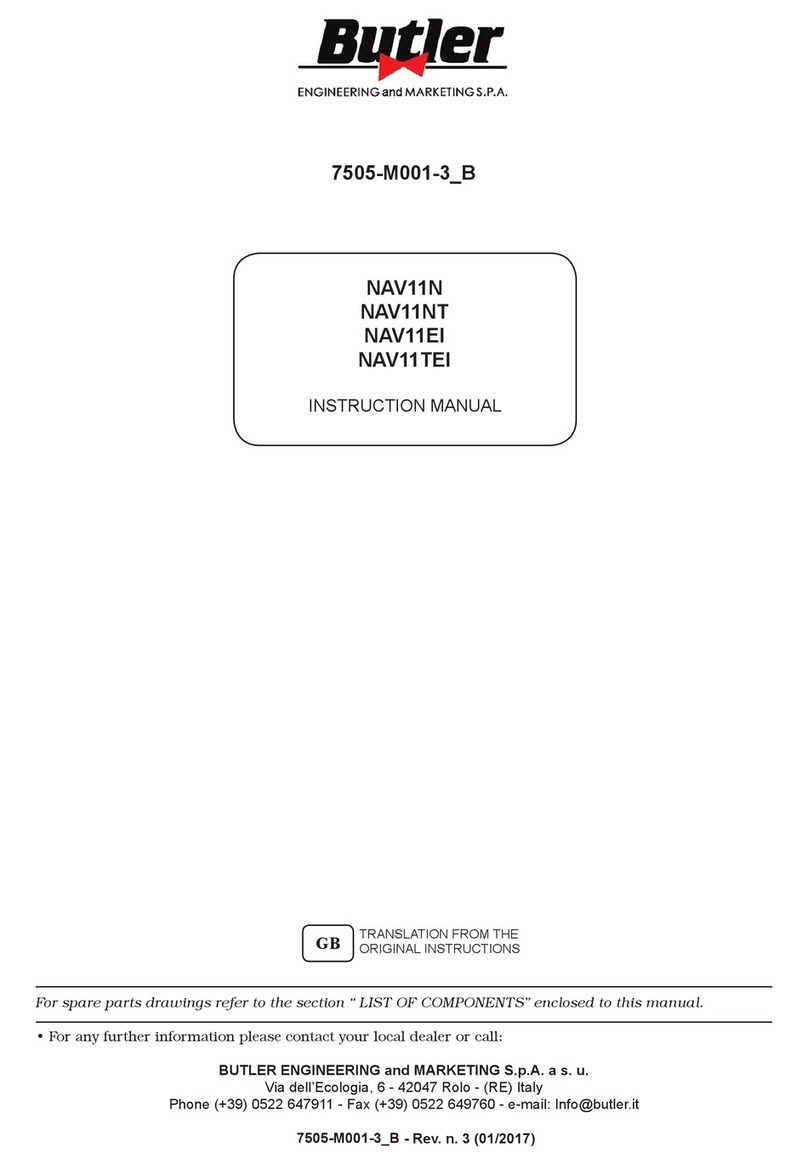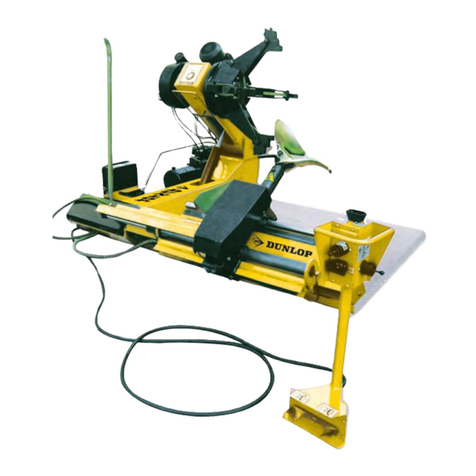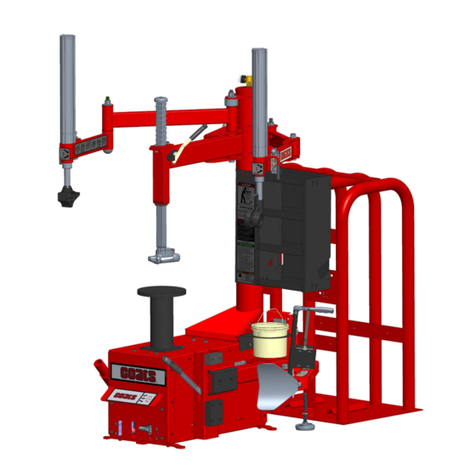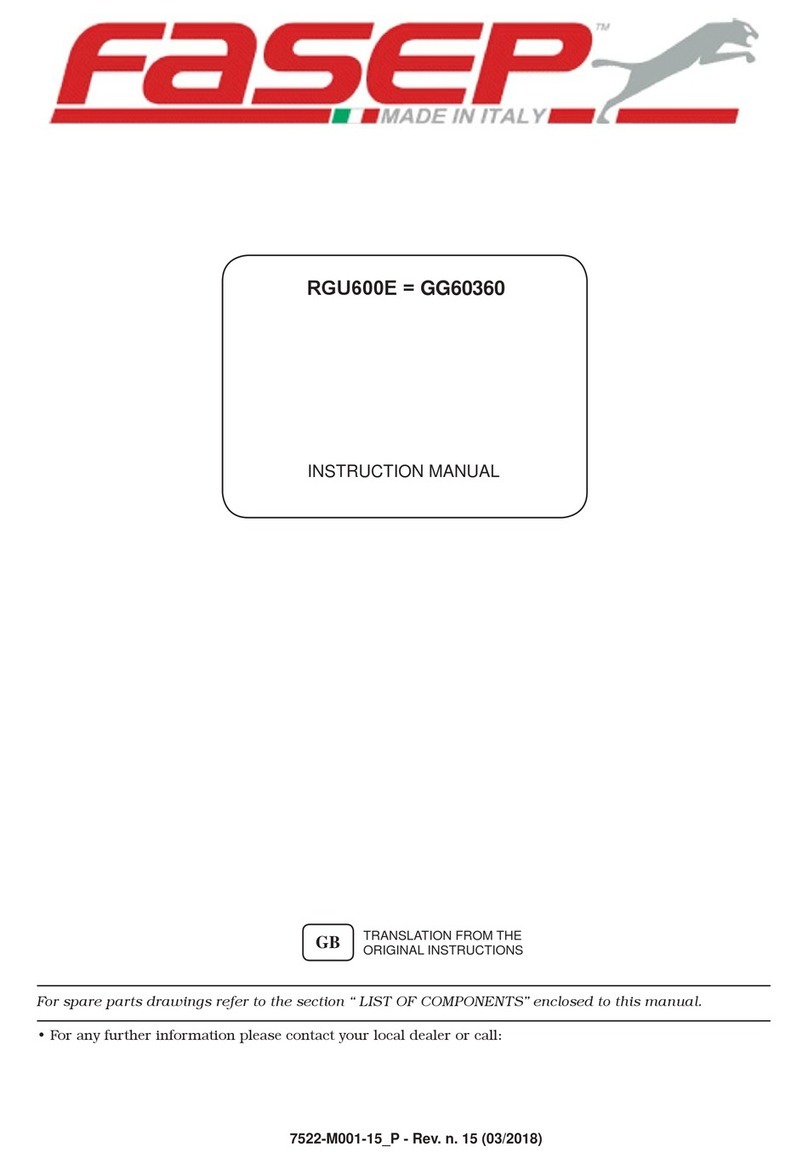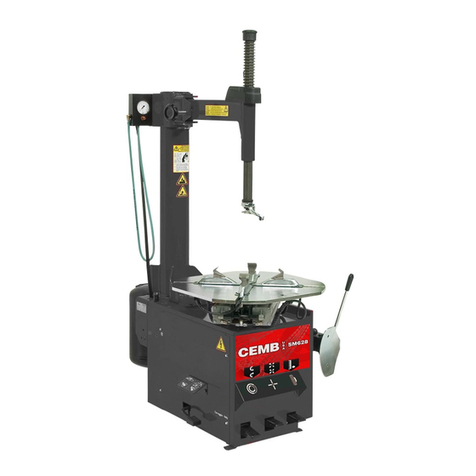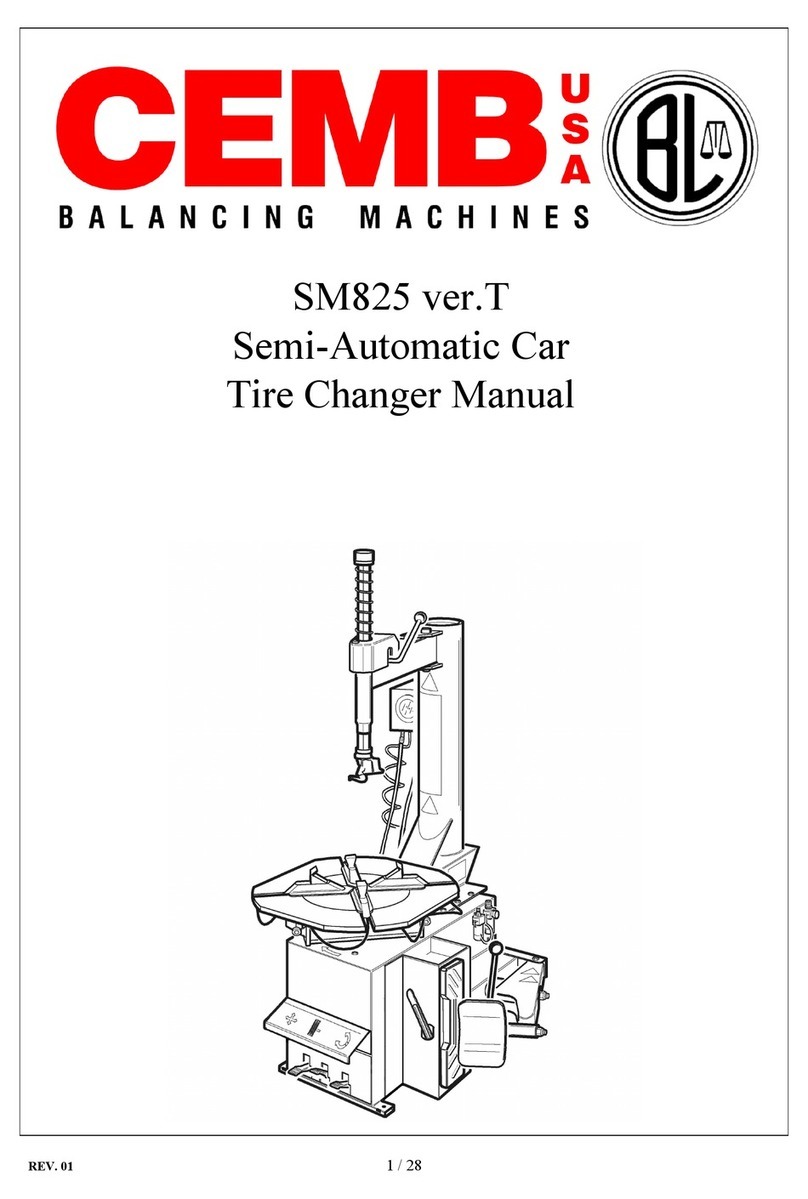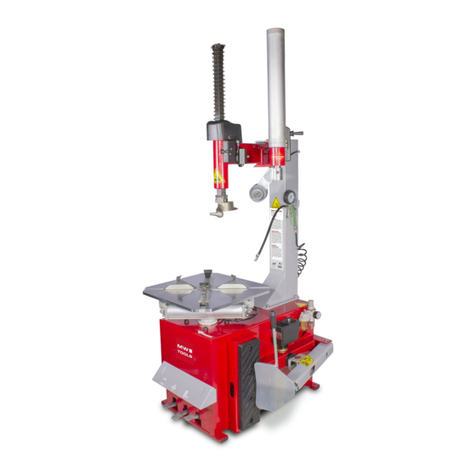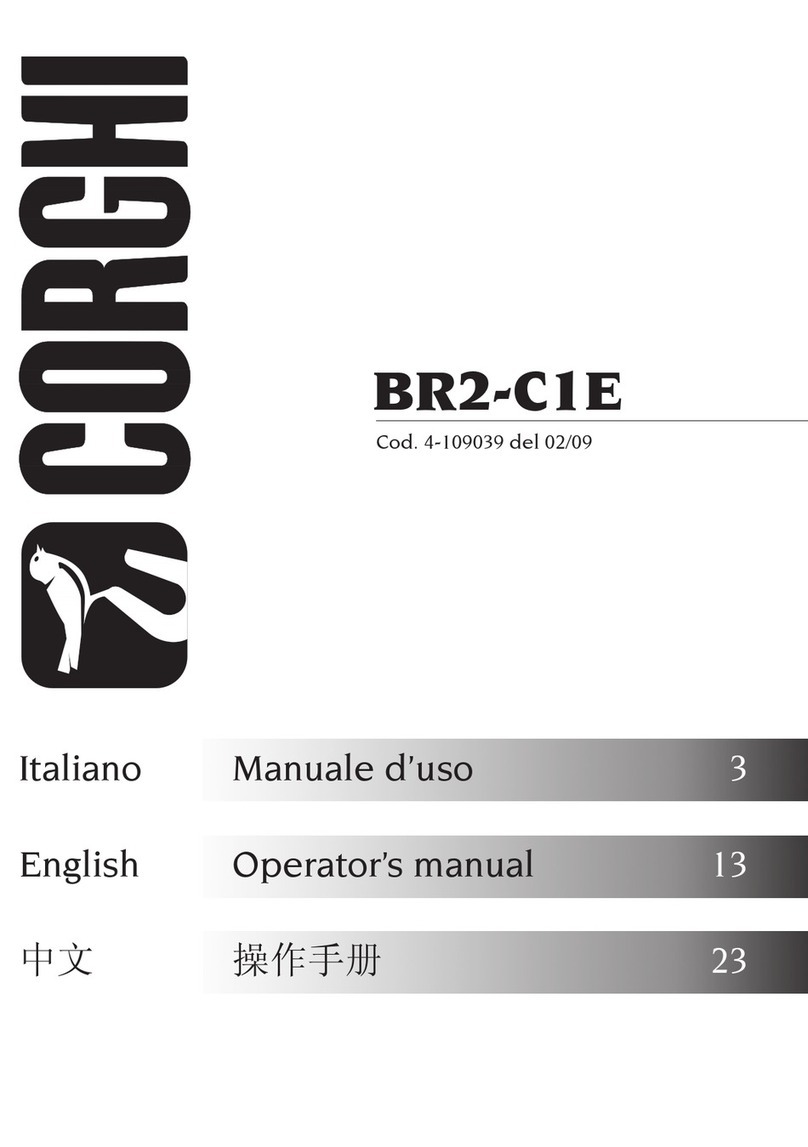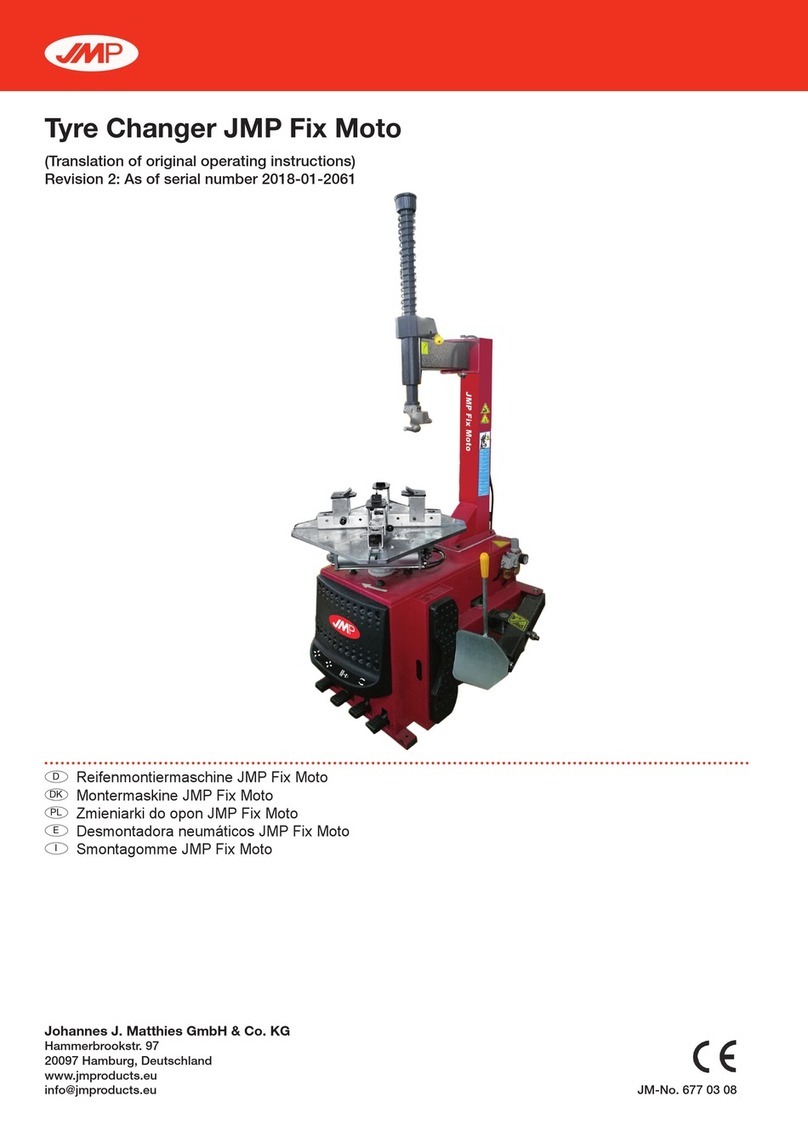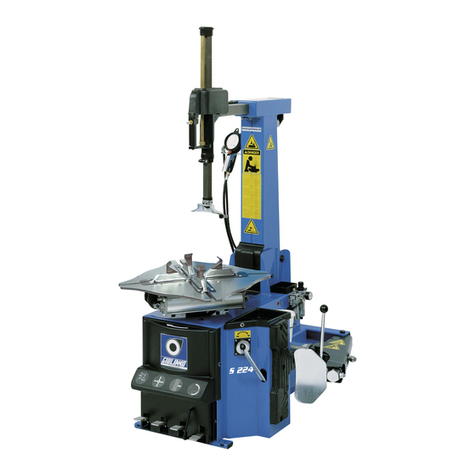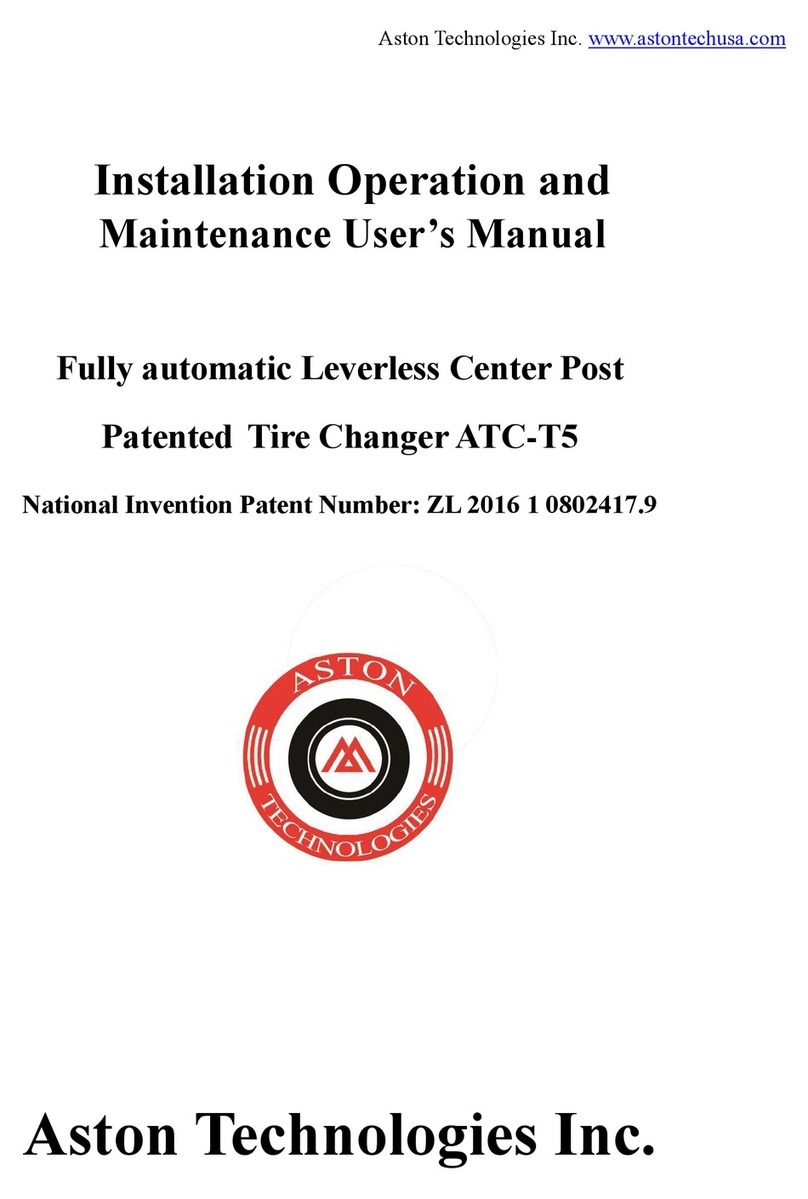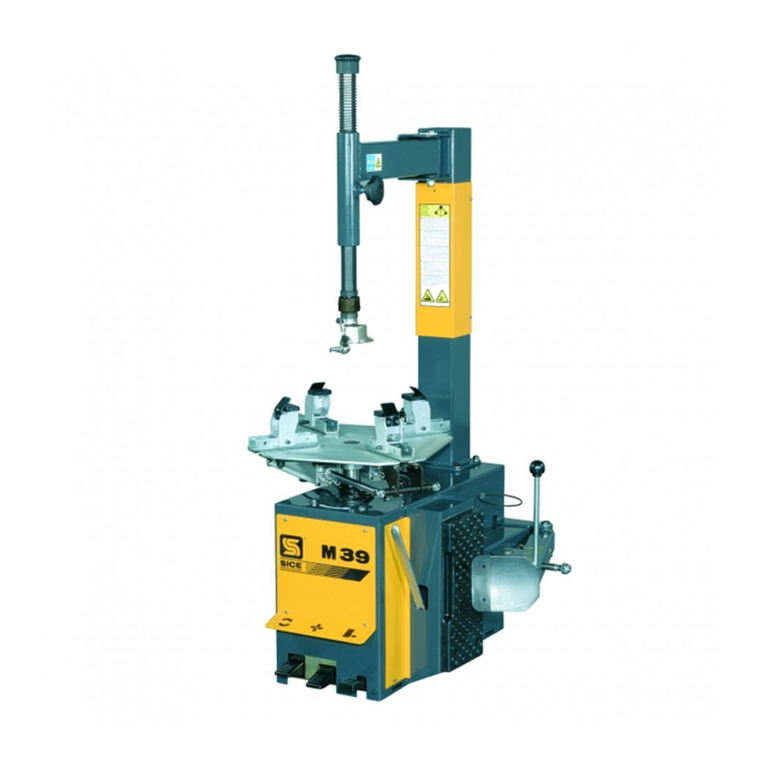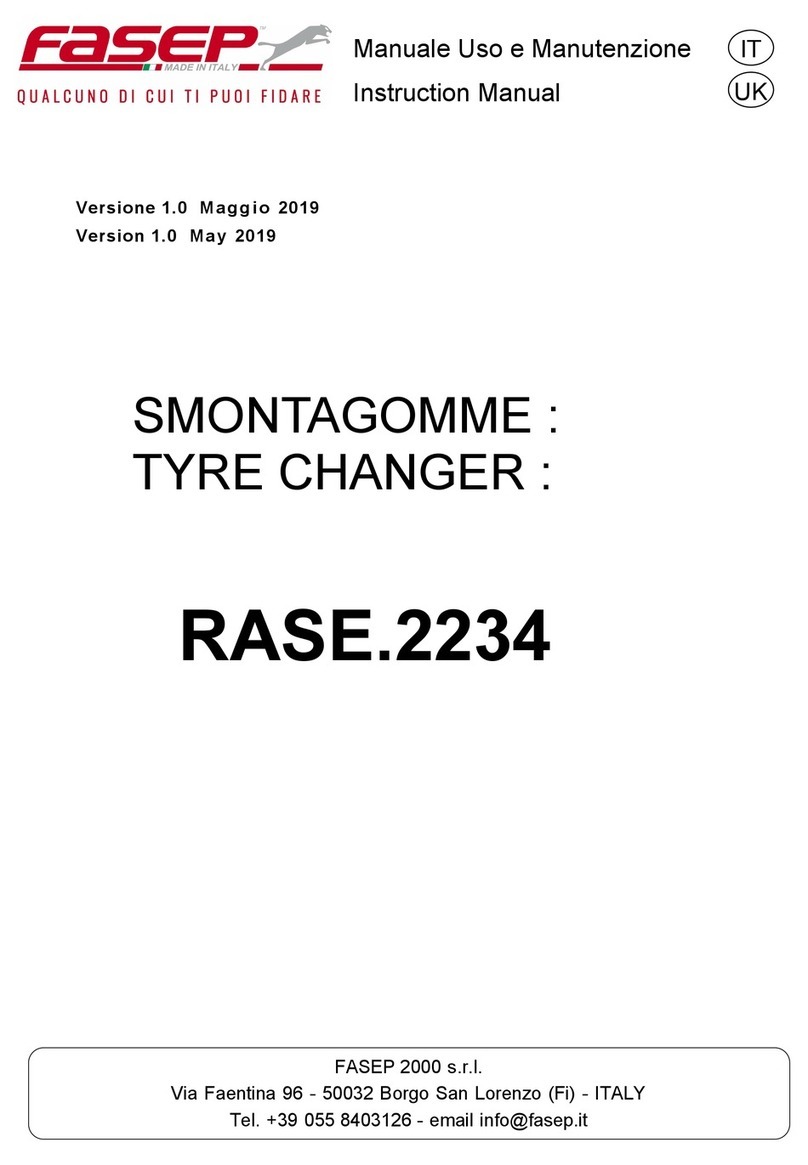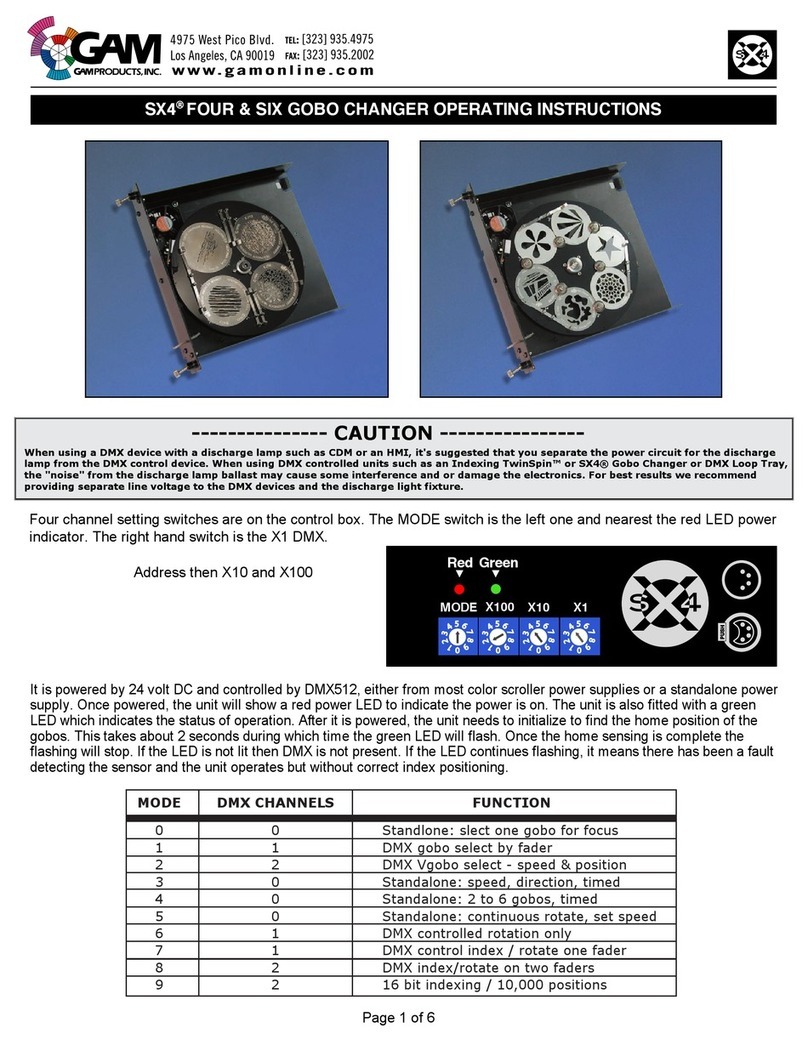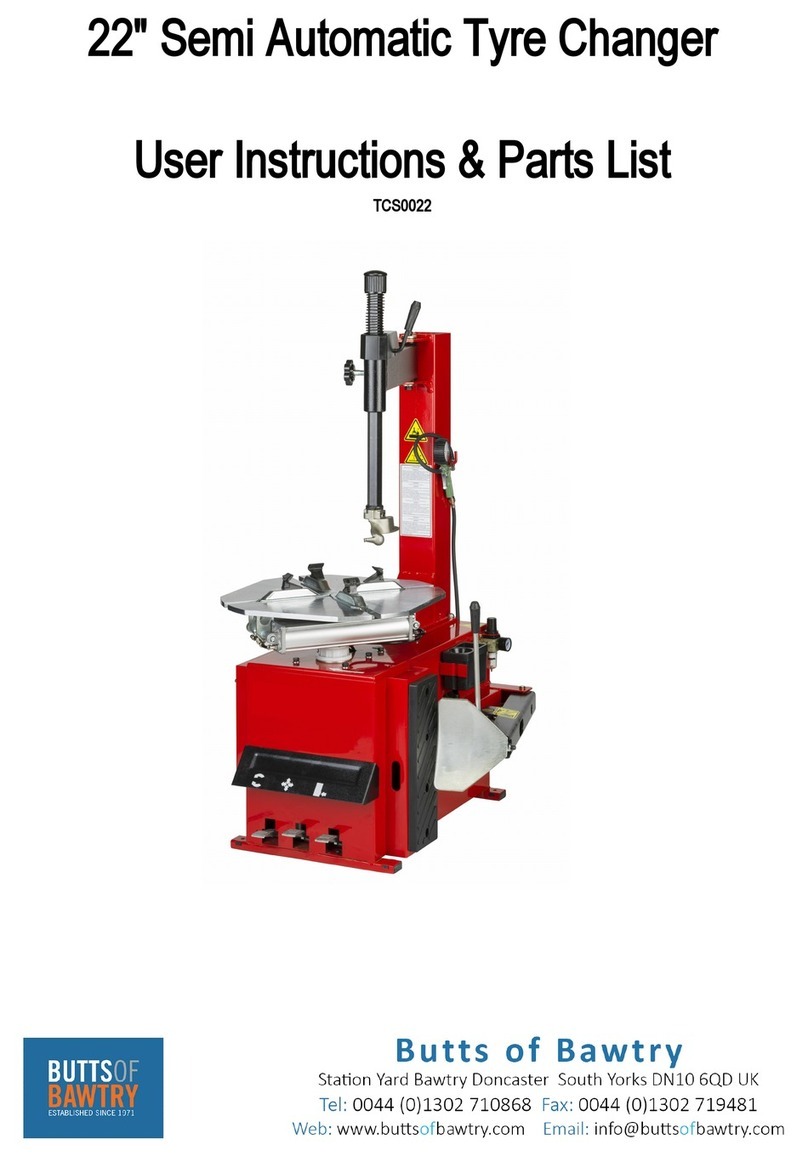
User’s manual 5
EN
SUMMARY
1. COMMISSIONING.......................................................................................6
1.1 INTRODUCTION ...............................................................................................6
1.2 FOR YOUR SAFETY.........................................................................................6
1.3.
ADDITIONAL RIM/TYRE INFORMATION ....................................................... 19
1.4. INTENDED MACHINE USE ...........................................................................19
1.6. PRELIMINARY CHECKS................................................................................19
1.7. DURING USE .................................................................................................20
1.8. OPTIONAL ACCESSORIES...........................................................................20
2. TRANSPORT, STORAGE AND HANDLING ............................................21
3. UNWRAPPING..........................................................................................22
4. MOUNTING...............................................................................................22
5. LIFTING/HANDLING.................................................................................23
5.1 INSTALLATION AREA .....................................................................................23
6.
DESCRIPTION OF THE MACHINE.............................................................25
6.1. OPERATOR POSITION..................................................................................25
7. OVERALL DIMENSIONS (mm) ...............................................................26
8. MAIN WORKING ELEMENTS OF THE MACHINE..................................27
8.1 COMMANDS ...................................................................................................27
9. BASIC PROCEDURES - USE ..................................................................30
9.1. PRELIMINARY CHECKS................................................................................31
9.2. DECIDING FROM WHICH SIDE OF THE WHEEL THE TYRE MUST BE REMOVED..... 31
9.3. BEAD BREAKING ..........................................................................................32
9.4. CLAMPING THE WHEEL ...............................................................................34
9.5. WHEEL DEMOUNTING..................................................................................35
9.6. WHEEL MOUNTING.......................................................................................42
9.7. TYRE INFLATION...........................................................................................45
10. IPL - LIFTER WITH ROLLER REST.......................................................51
10.1. GENERAL INFORMATION...........................................................................51
10.2. TECHNICAL DATA........................................................................................51
10.3. FUNCTIONAL PARTS ..................................................................................51
10.4. HAZARD LABELS KEY ................................................................................51
10.5. CONTROLS..................................................................................................52
11. TROUBLESHOOTING ............................................................................53
12. MAINTENANCE......................................................................................55
13. SCRAPPING ...........................................................................................57
14. ENVIRONMENTAL INFORMATION .......................................................57
15. INFORMATION AND WARNINGS ABOUT OIL .....................................58
16. FIREFIGHTING EQUIPMENT TO BE USED.......................................... 59
16.1 DRY MATERIALS ..........................................................................................59
16.2 FLAMMABLE LIQUIDS .................................................................................59
16.3 ELECTRICAL EQUIPMENT ..........................................................................59
17. GLOSSARY.............................................................................................60
18. GENERAL WIRING DIAGRAM .............................................................64
19. PNEUMATIC SYSTEM DIAGRAM .........................................................68

